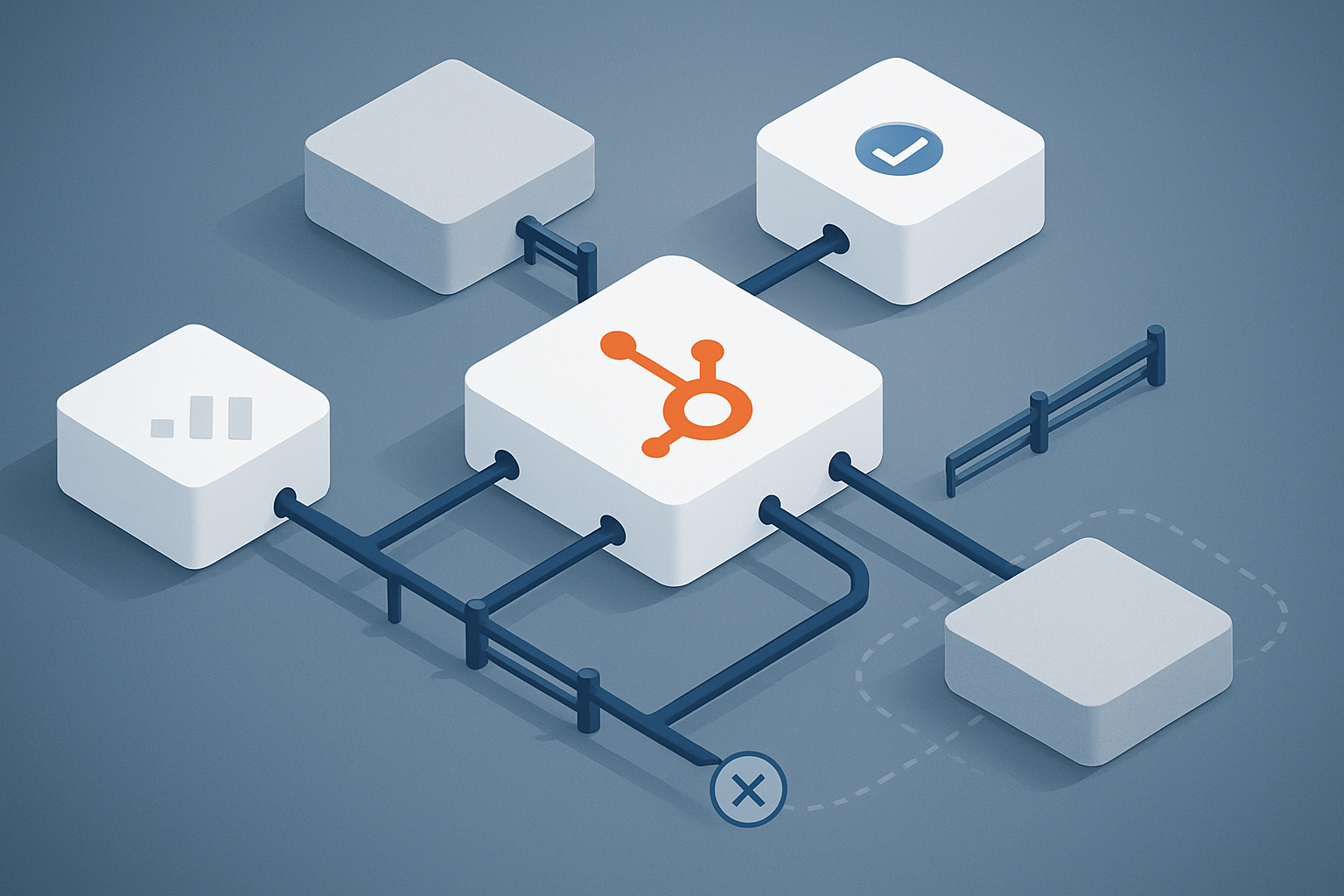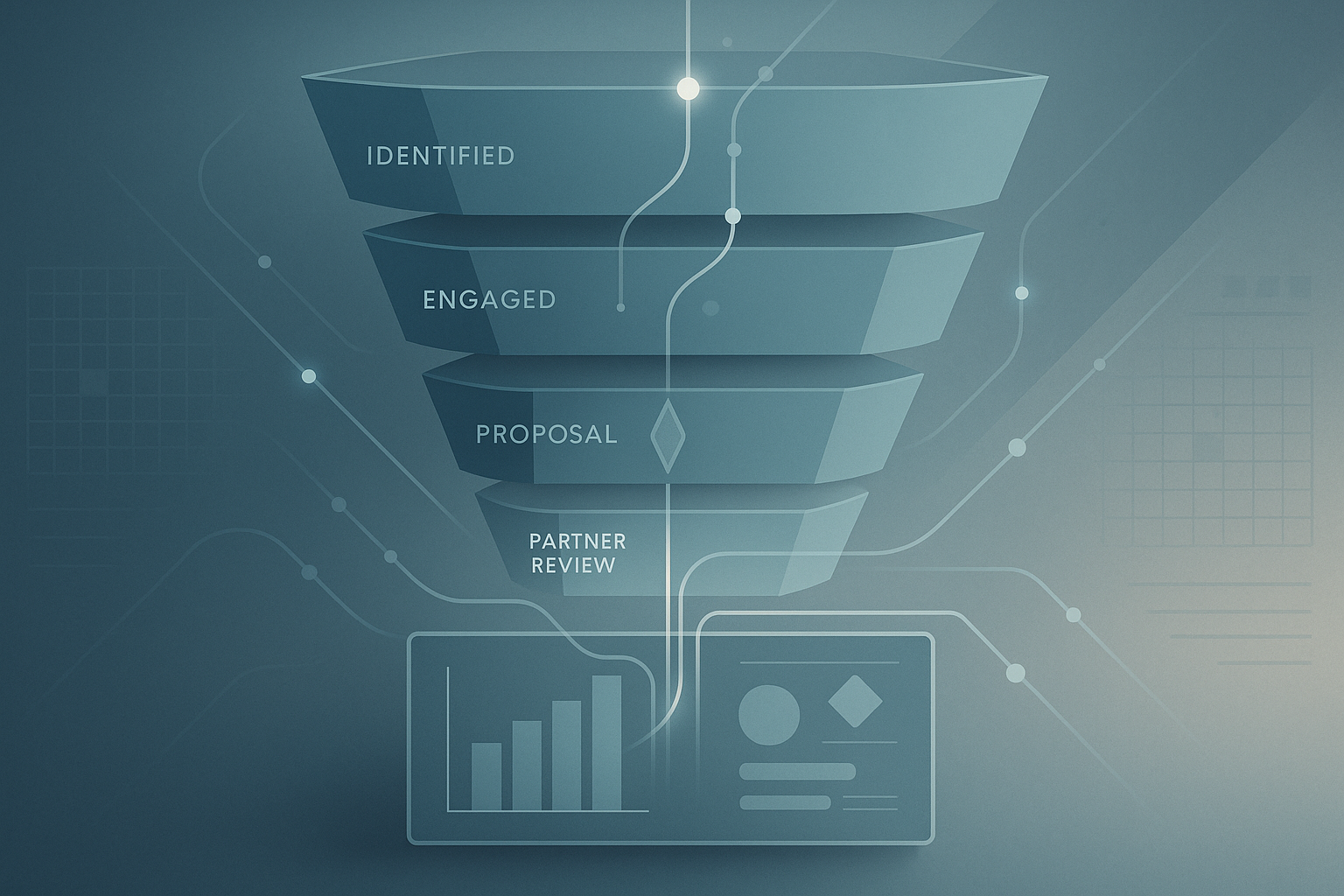The 4 Pillars of Digital Transformation
Customer Experience
Digital Transformation

Covid-19 has accelerated digital transformation and digital investment significantly over the past six months. According to a study by Twilio (a software company focused on APIs), 97% of enterprise decision-makers say that their company’s digital transformation has been sped up by the pandemic.
To make sure that your transformation strategy is fully thought out and not purely a reaction to global uncertainty, keep the 4 pillars of digital transformation in mind: data, processes, people, and technology.
Pillar 1: Data
It’s been said before and it will likely continue to be said, but data really is the oil of the 21st Century. In today’s world, nothing is quite as valuable as information. Being able to store, sift, and utilise data effectively is what can really set companies apart.
Segmentation
A great place to start the data portion of your digital transformation strategy is segmentation. This focuses on customer data more than anything, but your strategy needs to ensure that a) you have the data you need and b) you are able to use it effectively.
Before setting up new forms that ask for everything under the sun, create a list of all the data points you would like to have. Then, once your teams agree that this is the information that would be most useful, organise it into three categories: Necessary, Helpful, and Nice to Have.
Once you’ve sorted your categories this way, you can start building out a strategic way of gathering the information. Start with the basic information (think Name, Email, Company name) and then continue to gather more information in future forms.
If you use HubSpot, one option that you have is to use progressive fields so that a person will be asked new questions with each form they fill out.
As you gather the data you need to understand your audience, you can start using segmentation to ensure that visitors see more content that is relevant to them and their specific needs. You can segment by virtually any data category that you choose.
Some of the most popular options are segmentation by persona, buyer journey stage, location, or behaviour.
Personalisation
After you’ve gathered the information that you need for segmentation, you’ll also have enough information to personalise the customer experience for that contact.
According to a 2018 study by Accenture, 83% of people will willingly share their data in exchange for a personalised experience. Although the vast majority of people prefer personalisation, it can be a slippery slope from helpful to creepy.
To avoid over-using the data that you acquire, try to think in terms of being friendly and helpful, but not invasive. For example, unless you’re an ice cream company, there’s no reason to remind a visitor that you know their favourite flavour, whether they’ve provided that information willingly or not.
Try to keep personalisation to only the most relevant information. In fact, even using a visitor’s name too frequently can be off-putting. These are important boundaries to put in place when developing the personalisation aspect of your digital transformation strategy.
Reporting
Beyond creating valuable and frictionless customer experiences, data is pivotal to reporting and planning. Without a robust data gathering and management system, you’ll likely miss out on important information that can help and inform your decision-making process.
As you build your transformation strategy, be sure to include data-gathering on figures that can illuminate trends, customer behaviour, and return on investment (ROI). These crucial pieces of data will be needed to continue understanding the current landscape and to make strategic, data-driven decisions going forward.
This is the part where really understanding your data comes into play. A post from Google suggests that this year, with all of its uncertainty, could be ‘the perfect time to invest in planning and upgrading your analytics strategies for 2021 and beyond.’
Understanding your data and reporting effectively comes down to really knowing both your business and your audience. What are the metrics that mean something to your business and the board of directors and how are those measured?
Answering that one question is the key to a successful reporting element in your transformation strategy.
Data is the first of the four pillars of digital transformation that you need to focus on while you develop your digital strategy. In the coming weeks, we’ll cover what you need to know about the following three: processes, people, and technology.
Although the quickly changing world may feel like it’s pressuring you to act fast and take reactionary measures, it’s important to slow down, think, and create a strategy that will last for you and your organisation.
Pillar 2: People
People are not only a pillar of digital transformation, but also a pillar of every business. Now, more than ever, having the right people as part of your team is the key to success.
These are some of the things every business needs to know to ensure that their team is ready for digital transformation:
Right people, right seats
Getting the right people in your team will look different to every business. However, there are some indicators that can tell you if someone is right for your company.
Start with making sure that every person you hire understands and is aligned to your values. As a business, these should be your driving force and each person on your team should be a part of contributing to them in some way.
If everyone you work with is already well-acquainted with your values and upholds them in their day-to-day tasks (congratulations!), you can start to look at whether or not everyone is in the right role.
Perhaps there are people you have brought on board because they are a fantastic cultural fit, but they seem to be struggling with the role they have currently. If there is a way to manage it, it may be most beneficial to help them transition to a role where they are better suited.
Knowledge and Skills Gaps
Once you have people who are aligned to your company values and are in roles well-suited to their temperaments and abilities, it’s time to consider the gaps.
In order to successfully undertake a digital transformation project, you need to understand what knowledge you’ll need going forward (particularly things like software specific knowhow) and who, if anyone, in your business has this knowledge.
It’s also important to understand the knowledge that members of individual teams will need to be successful in their roles as your business progresses digitally.
After reviewing what is in place currently, find the gaps in knowledge and skills between what exists and what needs to exist. In that space, think about whether you need to upskill and train current employees or whether there is a role that needs to be created or filled.
Digital Adoption pace
Another people-centric concern to be aware of when creating your digital transformation strategy is differing adoption rates amongst your team.
While you likely have some members on your team who are primed and ready for adopting new technology into their day-to-day, there are going to be some who resist change. In some cases, even moving to cloud-based storage can be a sticking point for employees.
Because of this, a single widespread roll out of new tech can be a struggle. As you begin planning, keep in mind who is likely to be an early user and who may need some extra encouragement.
How to encourage Digital adoption
Knowing that there may be members of your team who are resistant to digital adoption, part of your transformation strategy should include ways to encourage them to appreciate the change.
These five tips can help your team adapt and adopt earlier than they otherwise might have:
- Digital transformation ambassadors - Those early adopters in your team can be a great resource. Turn them into ambassadors for your transformation project so that they can motivate team members and help answer questions.
- Demonstrations - Put together practical demonstrations of the possibilities and ideal outcomes from adopting the new way of working. This can help employees understand why this project has been undertaken and what the future goals with it are.
- Clear communications - Be sure to communicate the digital transformation plan to your team and help them understand both timelines and actions they’ll need to take on.
- Empower curiosity - Enable your team members to embrace their curiosity by setting up new tech in a way that they can play around with. Let them try new things so they have a full grasp of the technology’s capabilities without affecting any ongoing work.
- Provide training - Like any new skill, adopting a new technology will require training. Some of your team may be comfortable using it without much learning, but others may need more help. Providing formal training is a great way to ensure that everyone is starting from the same foundation.
Of the four pillars of digital transformation, people can be the hardest one to get right. It requires both strategic thinking and a high EQ (emotional intelligence) to find the best balance for your team. That said, if you use these tips and encourage your team through their varied adoption paces, you’ll find that people can also be your greatest asset.
Pillar 3: Technology
It’s important to integrate new technologies into the business in a way that doesn’t cause more friction than it solves. To do that, you need to think about the infrastructure around it, the security risks it either introduces or removes, and the flexibility of its use.
These three elements are the key considerations to pay attention to when bringing in technology for your digital transformation strategy.
Flexibility
In today’s world, flexibility is key. As both work-from-anywhere culture and mobile phone usage skyrocket, our technology needs to be able to keep up. This means that any new platform or software you bring into your company needs to work for both your business and your team.
To ensure that your systems and hardware all work together, you’ll create an Internet of Things (IoT). IoTs connect all of the hardware (or things) that you use in your business and that need to be capable of interacting.
One element of this that can be difficult to manage, but which is necessary for developing your network correctly, is your device policy. There are many different types such as: Choose Your Own Device (CYOD), in which the employee chooses from a pre-qualified list, and Bring Your Own Device (BYOD), in which the employee uses their own personal device to perform work tasks.
There are perks and pitfalls for each decision, so be sure to choose the one that is right for business, keeping in mind the ability to scale this choice in the future.
Another aspect of flexibility to keep in mind is adoptability. Not all of your team members will be early adopters and those who are not will need to see the benefits of change even without fully embracing the tech.
Infrastructure
To create flexibility, integrate new capability, and maintain a functioning business, a strong focus needs to be on reworking the infrastructure in your digital transformation strategy. Within this, there are a couple of important first ports of call.
The first area that many look at when implementing digital transformation is cloud migration. Likely, this was the area that first piqued your interest! Moving your business to a cloud platform enables greater flexibility and scalability that was not easily achievable through physical networks.
It also lays the groundwork for creating an agile, work-from-anywhere system.
After you’ve enabled your business to run cloud-first, you’ll be able to begin introducing new technologies. Particularly relevant this year has been the necessity for video conferencing capabilities, but auditing your overall tech stack to ensure that it fulfils all of your business needs should be a regular occurrence.
This will also tie heavily into the final, fourth pillar: processes. We’ll cover that in the next instalment of this series.
Security
Security has been one of the major concerns surrounding this year’s drive toward accelerated digital transformation. With so many new access points and so much more digitally stored data, the risks have grown significantly.
Moving to the cloud is a good start, but security needs to be integrated into all software and hardware usage. This requires the implementation of robust security policies and a strong understanding of data management.
With GDPR having only come into play just over two years ago, data has been a hot topic for quite some time. Now, however, that conversation is even more important. As limiting data access to physical locations is no longer viable, the adaptation of policies to include remote access and a number of different devices is vital.
More businesses will have to ensure that they are doing their utmost to protect the data that they hold by instituting new procedures like two-factor authentication or VPNs (virtual private networks).
As you begin your journey into digital transformation, technology will likely be your first stop. While ensuring you have the right software and tools is key, being certain that those tools are used correctly and safely is paramount to creating a successful strategy for full digital transformation.
The tech you use and the policies you implement will need to be well-suited to encouraging scalability and flexible, agile working.
Pillar 4: Processes
Digitally transforming your processes means utilising your data, tech and skills in a way that removes friction. To do this effectively, you’ll need to start automating.
Why you should automate
Automation can sound like a lengthy and technical process, so you might wonder whether it is a worthwhile use of your business’ time and resource.
The fact is, if you are interested in creating a digital transformation strategy for your company, automating your processes needs to be a part of that. It can help by both clarifying the processes you already use and streamlining them to reduce friction.
Setting your business up for automation requires that you understand your processes inside out.
You’ll need to know exactly what you do in order to create an automatic process for it. By ensuring that you and your team fully understand the process as it exists, you can paint a clear picture of the way things are done. This alone encourages your team to create and follow a straightforward, repeatable process that removes some room for error.
In addition to clarifying the processes currently in place, setting up for automation (and automating itself) enables you to examine them thoroughly and remove points of friction in otherwise manual processes. This will save time, ensure a consistent customer experience, and create opportunities that you may not have noticed if things continued as they were.
Tips for getting started
Beginning your journey down the road of automation is daunting and many businesses go about it in the wrong way. Rather than taking an ad-hoc approach to automation, changing processes as they occur to you, following a path already determined can make the transition much smoother.
Process mapping
To start moving your processes toward automation, it’s important that you have them mapped out clearly. Be sure that each step of the process is covered, even the ones that seem like common sense. From there, you’ll need to begin auditing them.
The auditing stage of this process mapping is key to understanding and defining the strategic plan you will put in place to begin implementation. As you review your processes, here are a few things you should keep in mind:
- How much time and effort does each stage of this process require?
- Is this something that slows your team down?
- How much margin for human error is there in this task?
- Would automating it make this more consistent and less prone to mistakes?
- Is this a core part of our offering?
- Would automating this process make the offering more scalable or available?
- Alternatively, would automating this step remove an important human touch point?
- How clearly has this process been mapped - are there any pieces missing?
- Are the steps clearly defined and repeatable?
- And, of course, is it possible to automate this task?
Answering these questions for each process and, in some cases, each step will help you better understand your options for automation. This will also enable you to create a system for prioritising your transformation projects.
A good place to start with this is to prioritise quick-wins - the processes that consume the most time, but will be easy to implement. You’ll see the most immediate reward in these areas which can help bring your team on board with digital transformation.
Ideas for what to automate
Even with a thorough audit, it can be difficult to decide which processes to automate first. With that in mind, here is a list of some of the more common places to start:
- Thank you and follow-up emails sent after a contact takes an action (like downloading a guide or getting in touch)
- Posting to social media
- Booking meetings
- Answering site visitor questions with a chatbot
- Predictive lead scoring to transition contacts along a funnel
- Warm touch point emails to delight customers (such as on birthdays or holidays)
- Segmenting contacts
These can be a great place to get started with automating and transforming your processes.
When it comes to developing the digital transformation strategy for your business, each of the four pillars plays an important role. From ensuring that you have the right data and technology to perform the tasks to having the right people, skills and processes to use that same data and tech effectively, no transformation is complete without all of the pillars working together.
If you’d like to talk about a digital transformation strategy or how you can better utilise your data, get in touch. We are always excited to talk about both.


